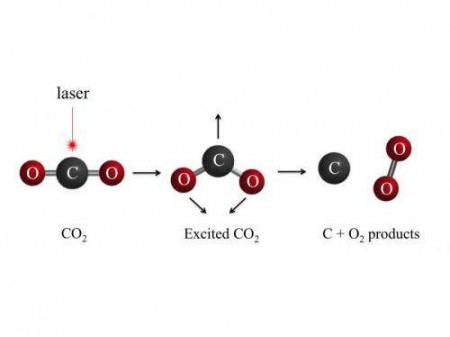June 25, 2015 – For future astronauts on Deep Space missions, a technology developed at University of California, could prove the difference between life and death.
If you remember Apollo 13 and the improvisation required to develop a CO2 scrubber on board the Lunar service module, LEM, then you know just how toxic a buildup of CO2 can be to spacefarers. In battling to save the astronauts’ lives, NASA engineers improvised a filter to deal with the CO2 output from three astronauts in an environment that was only supposed to support two. They succeeded but it was a near thing.
Deep Space missions will require crews to bring along all the breathable air they need for the duration of a mission. What will they do with CO2 they produce? Conventional technology we use today is inadequate to deal with long space voyages. NASA, ESA, Roscosmos and the Chinese Space Agency have all been working on solutions that include the cultivation of sufficient plants to suck up the CO2 and expel oxygen. But how much on board real estate would be needed for plants to create breathable air? And how would a human crew survive should the plants die? That’s why if a technology could do the same thing that plants do it could prove to be a very good solution?
Well the researchers at University of California have found a way to use the shortest wavelength of ultraviolet light known as VUV (vacuum ultraviolet light) to break apart CO2 molecules. They do this by aiming a laser at the molecules, first to break them. Then a second laser ionizes the pieces so they can be measured. The results so far, 5% of the CO2 splits into carbon atoms and free oxygen. Now the trick is to design a small enough on-board system that can continually create oxygen by breaking CO2 molecules produced when human spacefarers exhale. Such a device would reduce the need to bring oxygen consumables along for the ride.
Even more interesting, a machine capable of synthesizing oxygen could prove useful on planets whose atmospheres are largely composed of CO2. For example Mars and Venus.
Imagine synthesizing oxygen out of the Martian atmosphere for human habitations. Or putting a machine in orbit around Venus that converts its dense CO2 atmosphere into one containing oxygen as a first step in terraforming the planet.
Speculated by science fiction writers a discovery like this could actually create a future where human Martians and Venusians might live on our neighbouring planets. In Kim Stanley Robinson, science fiction novel, 2312, which I recently finished reading, Venus and Mars are both habitable planets terraformed by using technology that alters the planets’ atmospheres. The humans in Robinson’s future create hollowed-out terraria from asteroids, populate them with Earth flora and fauna based on themes, and navigate with them through the Solar System. Is this plausible? Well harvesting oxygen from CO2 could be a first step down that “implausible” path.









